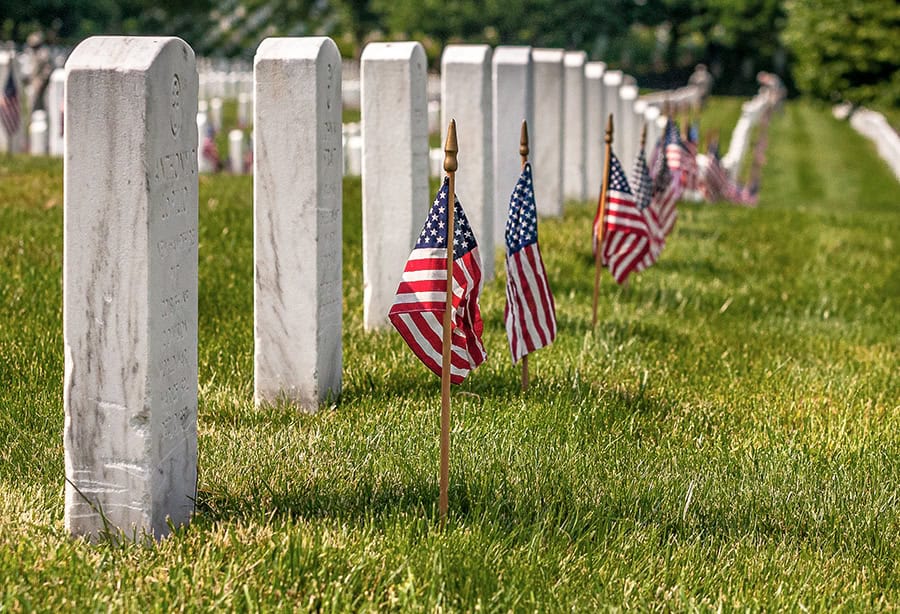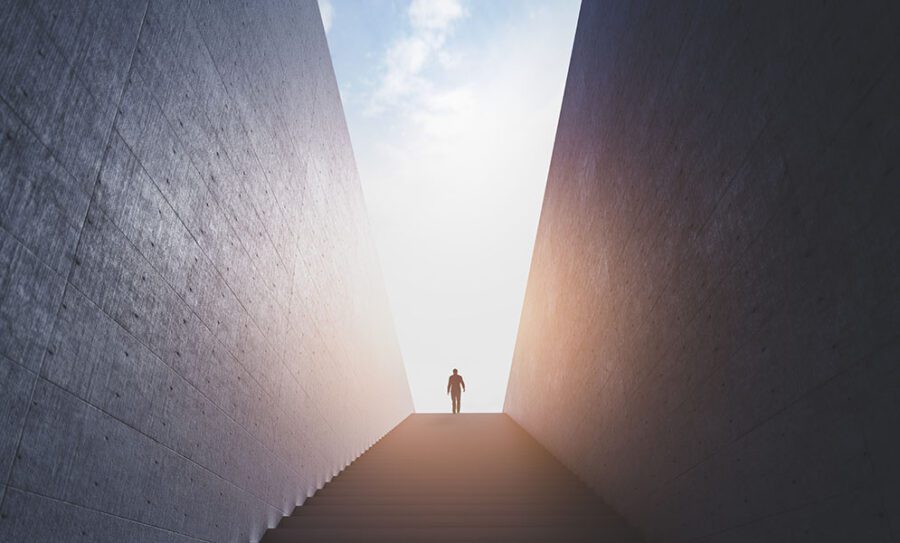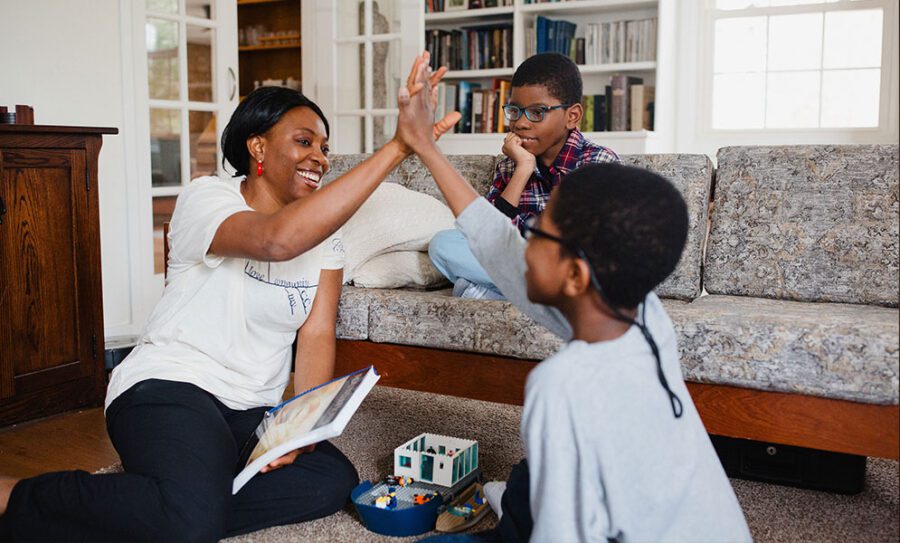Our precious memories are our most prized possession. Beyond our external features, our memories are what make a person unique. No two people share an identical history, and yet nations across history share the need for a collective memory that unifies their people and makes them one culture. For the United States, Memorial Day has been a symbol of unity and patriotism expressed locally and personally across the country, but has failed our citizens every time momentary political interests distract from the holiday’s original purpose to solemnly commemorate the fallen who died in service to our country and its ideals.
The Origins of Memorial Day
The exact origins of Memorial Day have been disputed almost since its inception, but what is verifiable is that women, children, and even former slaves all played a part in the development of this national holiday since the latter days of the American Civil War. Well over 600,000 soldiers died, leaving behind countless widows, their children, and those whose freedoms the conflict ultimately secured.
A Notable Beginning in Charleston, South Carolina
The most notable and compelling origin story of Memorial Day occurred on May 1, 1865, when over 10,000 former slaves in Charleston, South Carolina, reburied 257 Union soldiers who had died in a Confederate prison camp and honored them with a proper burial ceremony. Numerous communities across the North and South publicly decorated Civil War graves in the immediate aftermath of the war, as one might expect. There have always been memorials for the honored dead throughout history and across cultures. What was new was the unique attempts by so many to use local memorials as a tool for healing after a terrible war. In contrast, others sought public notoriety and an opportunity to maintain the cultural divide.
Early Memorial Observances Across the South
Southern Women Led the Way
Southern women had begun the practice of Civil War memorial observances on March 11, 1866. Mary Ann Williams, secretary of the Ladies’ Memorial Association of Columbus, Georgia, wrote an open letter to newspapers across the South. In it, she urged women to decorate the graves of Confederate soldiers, igniting a regional movement of remembrance. She signed it simply, “Southern Women.” God bless them. Their acts of compassion sparked a wider spirit of reconciliation.
A Gesture of Reconciliation in Columbus, Mississippi
In Columbus, Mississippi, Southern women chose to decorate the graves of both Confederate and Union soldiers. Their remarkable gesture inspired a national response, including an editorial in Horace Greeley’s New York Tribune and Francis Miles Finch’s poem, “The Blue and the Gray,” published in The Atlantic Monthly. Southern communities set April 26, marking the Confederate surrender in 1865, as their annual day to honor the fallen.
The Rise of Decoration Day in the North
The Grand Army of the Republic and May 30th
More than two years later, John A. Logan, Commander-in-Chief of the Grand Army of the Republic (GAR)—a veterans’ association of Union soldiers—proclaimed the first national observance of what was then called “Decoration Day” on May 5, 1868. May 30, 1868, marked the formal adoption of the observance day to honor Union soldiers who had died in the Civil War.
Logan was not only a Union Major General who later led a veterans’ organization. He became a politician and served as a US Representative and Senator from Illinois, as well as a Republican nominee for Vice President in 1884. Was he intentionally trying to be divisive by establishing a holiday exclusively for fallen Union soldiers? Perhaps not, but the response in the South was to begin referring to the earlier April 26th date as “Confederate Memorial Day.” Decoration Day continued to spread across the North, and by 1890, every northern state had declared May 30 an official state holiday.
Confederate Memorial Day: A Parallel Remembrance
The first official celebration of Confederate Memorial Day followed an 1874 proclamation by the Georgia state legislature, and by 1916, ten states had celebrated it. Having lost the unifying spirit of the original inspirations of memorial days, they had chosen June 3 to celebrate it—after all, June 3 was the birthday of Jefferson Davis. Even though the guns were silent, the national divide persisted through the Reconstruction years.
A Call for National Unity
Memorial Day celebrations continued to provide occasions for Southern states to hold commemorative ceremonies and sponsor monuments to the Confederate dead. In the North, organizations like the Grand Army of the Republic ritualized their ceremonies. They took the opportunity to recall the atrocities of the enemy. Across the country, speeches were given. The bible was read, and hymns were sung.
Woodrow Wilson and the Blue-Gray Reunion
However, by the time Southerner Woodrow Wilson returned to the White House in 1913, a new nationalism emerged as many Civil War veterans passed on, and younger generations were less personally connected to the conflict 50 years earlier. Wilson hosted a four-day Blue-Gray Reunion that called for unity and goodwill across what had been the great American divide.
Changing Attitudes Toward Memorial Day
Not everyone was happy that the country was moving on. As Memorial Day evolved, aging veterans criticized the growing frivolity of modern celebrations. The Grand Army of the Republic (GAR), a Civil War veterans’ group, protested plans to hold the newly established Indianapolis 500 on Memorial Day, their most sacred date of remembrance. The Indiana legislature agreed, voting to block the race. However, the American Legion, representing a younger generation of World War I veterans, supported the event. Governor Warren McCray vetoed the bill, allowing the race to proceed. It marked a clear cultural shift: America had moved on.
The Uniform Monday Holiday Act
In 1968, the Uniform Monday Holiday Act moved Memorial Day from May 30 to the last Monday in May, as noted in No President’s Day, by George!
Memorial Day as Sacred, Not Commercial
Separating the date of the holiday from its origins to give federal employees and retail outlets 3-day weekends and an opportunity to advertise Memorial Day sales has little to do with planting flowers and flags at gravesites. As late as 2000, even the VFW lobbied to have Memorial Day returned to its original date, “Changing the date merely to create three-day weekends has undermined the very meaning of the day. This has undoubtedly contributed greatly to the general public’s nonchalant observance of Memorial Day.”
Why We Must Remember & Lessons From the Past for the Present
I know. The Civil War was over 150 years ago, representing one of the ugliest periods in US history. It’s 2025, and people today need reasons to celebrate and share happy times. To such critics, I would suggest that a failure to remember the worst parts of our past denies us today of prudent warnings to address critical issues of our time peacefully, before bloodshed is the only remaining recourse. There are more than enough social issues today that motivate localized acts of violence. How long before the right (or wrong) issue sparks a brushfire of hostility between neighbors again?
Memorial Day in the Modern Era
Modern scholars may criticize Memorial Day for being too nationalistic, too religious, or simply a celebration of military conflict. I must agree somewhat with these points. The United States has played an outsized role in the world since WWII, and our military has been the greatest instrument that policymakers have deployed to exercise our national muscle abroad. However, no one can argue that there has been too much religion in American society over that same period. Bibles and prayers are not allowed in our schools. 501(c)3 churches are cowed from expressing any views that somebody could consider political. No, solemn and holy commemorations and remembrances that connect us to our heritage and remind us of our past sins are unifying and healthy for a nation.
A Grateful Nation Remembers
Memorial Day can be a beautiful reminder of the need to heal and an opportunity to recall the noble acts of a people. We should draw inspiration from the thousands of former slaves who recognized the importance of honoring those who sacrificed for their freedom. It is important to hold onto the good that a particular culture has to offer while acknowledging its faults to avoid repeating great tragedies like the Civil War. Thank you to all veterans who paid the ultimate price at the behest of a grateful nation.





